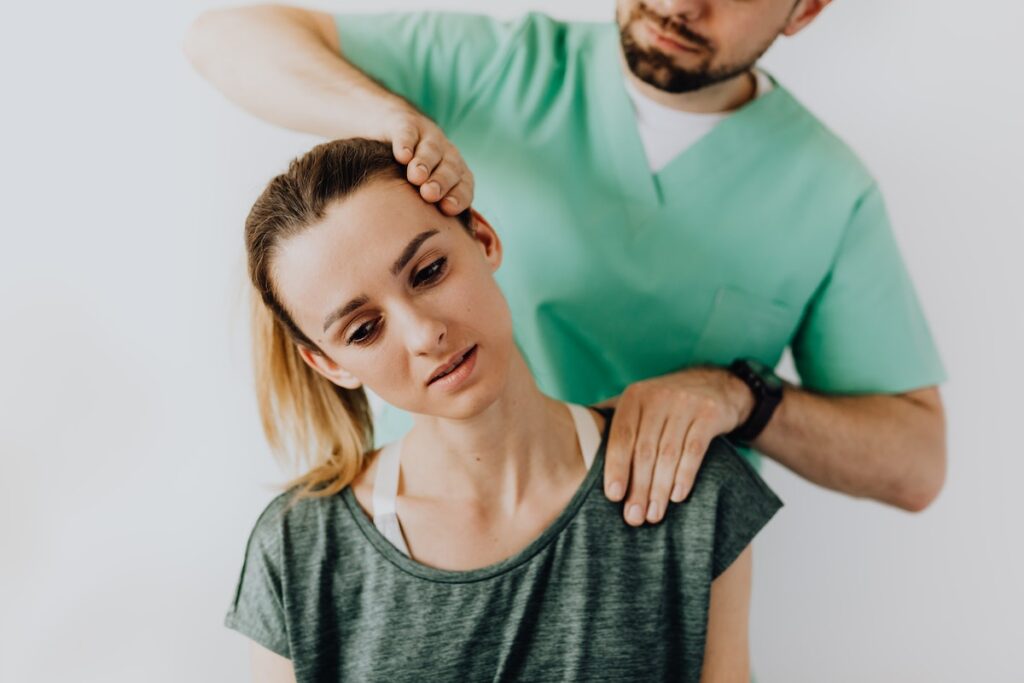Introduction
A sore neck is a common complaint that affects people of all ages and can arise from various causes. It is often characterized by discomfort, pain, stiffness, or limited range of motion in the neck region. Sore necks can be caused by muscle strain, poor posture, underlying medical conditions, or injuries. While most cases of sore necks are temporary and can be managed with self-care measures, some may require medical attention. In this comprehensive 3000-word article, we will explore the causes, symptoms, treatment options, and preventive measures for sore necks.
Section 1: Understanding the Neck Anatomy
The neck, also known as the cervical spine, consists of seven small vertebrae that support the head and connect it to the rest of the body. Between each vertebra are intervertebral discs, which act as shock absorbers and allow for flexibility and movement. The neck is also home to several vital structures, including muscles, ligaments, nerves, and blood vessels, all of which play a crucial role in neck function and stability.
Section 2: Common Causes of Sore Necks
Sore necks can be triggered by various factors, including:
- Muscle Strain: Overuse or sudden movements that strain the neck muscles, such as looking down at a phone or computer screen for extended periods.
- Poor Posture: Maintaining improper posture, such as slouching or craning the neck forward, can put stress on the neck muscles and lead to discomfort.
- Sleeping Position: Sleeping in an awkward position or using an unsupportive pillow can result in neck stiffness and pain.
- Neck Injuries: Accidents, falls, or sports-related injuries can cause damage to the neck structures, leading to soreness.
- Osteoarthritis: Degenerative changes in the neck joints due to age can cause stiffness and pain.
- Herniated Disc: A bulging or ruptured disc in the neck can compress nearby nerves, resulting in neck pain and radiating symptoms.
- Cervical Spinal Stenosis: A narrowing of the spinal canal can cause nerve compression and neck pain.
- Whiplash: A common injury from motor vehicle accidents, where the neck is forcefully jerked forward and backward, causing neck strain.
- Stress and Tension: Emotional stress can lead to muscle tension in the neck and shoulders, resulting in discomfort.
Section 3: Symptoms of Sore Necks

Sore necks can manifest in various ways, and symptoms may include:
- Neck Pain: Dull, achy, or sharp pain in the neck region.
- Stiffness: Limited range of motion, difficulty turning the head, or feeling “locked” in one position.
- Headaches: Pain that radiates from the neck to the head, leading to headaches.
- Muscle Spasms: Involuntary contractions of the neck muscles, causing sudden pain.
- Numbness or Tingling: Sensations of numbness or tingling that may extend into the arms or hands.
- Swelling: Inflammation or swelling in the neck region.
Section 4: Diagnosing Sore Necks
Diagnosing the cause of a sore neck typically involves a combination of the following:
- Medical History: The healthcare provider will inquire about the patient’s symptoms, medical history, and any recent injuries or activities that may have contributed to the pain.
- Physical Examination: A thorough examination of the neck, assessing range of motion, muscle strength, and areas of tenderness.
- Imaging Studies: X-rays, MRI, or CT scans may be conducted to visualize the neck’s internal structures and detect any abnormalities or injuries.
- Nerve Tests: Electromyography (EMG) or nerve conduction studies may be performed to assess nerve function.
Section 5: Treatment Options for Sore Necks
Treatment for a sore neck varies depending on the underlying cause and severity of the symptoms. Common treatment options include:
- Rest: Adequate rest is essential to allow the neck muscles to heal and recover.
- Heat and Cold Therapy: Applying heat packs or cold compresses can help reduce inflammation and alleviate pain.
- Pain Medication: Over-the-counter pain relievers or prescription medications may be used to manage pain and inflammation.
- Physical Therapy: Specific exercises and stretches designed to improve neck strength and flexibility.
- Neck Braces or Collars: In certain cases, a neck brace or collar may be recommended to support the neck and limit movement during the healing process.
- Massage and Manual Therapy: Techniques such as massage or chiropractic adjustments can help relieve muscle tension and improve neck mobility.
- Injections: Corticosteroid injections may be used for targeted pain relief in cases of severe inflammation.
- Surgery: In rare cases where conservative treatments fail or when there is a structural issue requiring intervention, surgical options may be considered.
Section 6: Preventive Measures for Neck Health

Preventing sore necks involves adopting healthy habits and practices:
- Proper Posture: Be mindful of maintaining good posture while sitting, standing, and walking.
- Ergonomic Workstation: Ensure your workstation is set up ergonomically to avoid unnecessary strain on the neck.
- Supportive Pillow: Choose a pillow that supports your neck’s natural curvature while sleeping.
- Regular Exercise: Engage in regular physical activity to keep the neck muscles strong and flexible.
- Stretching: Perform neck stretches regularly, especially if you spend extended periods sitting at a desk.
- Stress Management: Practice stress-relief techniques to prevent muscle tension in the neck and shoulders.
Section 7: When to Seek Medical Attention
While most sore necks resolve with self-care measures, there are instances when medical attention should be sought:
- Severe Pain: If the neck pain is severe, persistent, or worsening.
- Radiating Symptoms: If the pain radiates down the arm or into the hands.
- Neurological Symptoms: If there is weakness, numbness, or tingling in the arms or hands.
- Difficulty Swallowing or Breathing: If the sore neck is accompanied by difficulty swallowing or breathing, seek immediate medical attention.
Conclusion
A sore neck is a common condition that can significantly impact an individual’s quality of life. Understanding the causes, symptoms, treatment options, and preventive measures for sore necks is crucial for promoting neck health and overall well-being. Regular exercise, proper posture, and stress management are essential components of neck care. While most sore necks can be managed with self-care measures, persistent or severe symptoms warrant medical evaluation to identify the underlying cause and ensure appropriate treatment. By adopting healthy habits and seeking timely medical attention when needed, individuals can maintain a healthy and pain-free neck.


